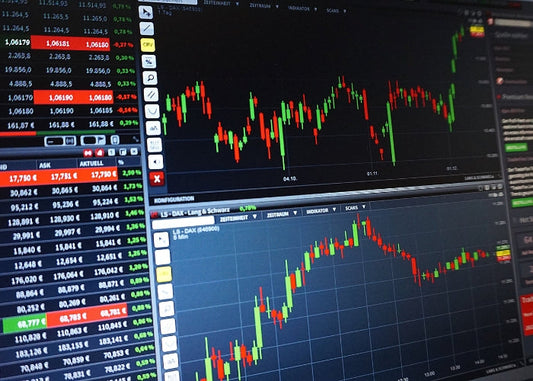FX Daily: Trive Bearish on EUR/JPY

While near-term tariff risks have somewhat diminished, they remain a key concern, especially for the EU. Notably, Trump is still weighing a 10% tariff on the EU, with trade being the central issue—unlike Canada and Mexico, where border security was a significant factor in negotiations. Meanwhile, Japan's latest labor earnings report strengthens the case for a BoJ rate hike as early as May.
EUR: Different Story
The euro remains under bearish pressure, primarily driven by weak economic growth and ongoing disinflation. However, trade tariffs—rather than ECB policy or domestic macroeconomic conditions—are the key factors influencing the euro’s trajectory. As expected, the ECB cut rates by 25bps to 2.75%, maintaining its data-dependent, meeting-by-meeting approach. Despite easing measures, monetary policy remains restrictive given the eurozone’s sluggish economy. While structural challenges cannot be addressed solely through monetary policy, political instability will likely keep the ECB engaged in providing economic support. The central bank appears committed to further rate cuts as long as inflation pressures continue to subside. ING views the January meeting as neutral but maintains that the ECB’s path toward neutral rates remains unchanged.
Lagarde’s comments reinforced this outlook, stating that the ECB’s macro assessment remains largely consistent with December’s projections. The central bank expects a gradual demand recovery despite persistent economic weakness. However, exports—one of the key growth drivers—face risks from potential US trade tariffs. On inflation, the ECB projects the headline rate to remain around current levels before stabilizing at 2% later this year. Lagarde dismissed discussions on pausing rate cuts as “premature,” reinforcing the ECB’s dovish stance. Market pricing currently reflects a 92% probability of another 25bps cut in March, which would bring the deposit rate to 2.50%.
Additionally, the latest German inflation data further supports the case for continued rate cuts. January’s headline inflation fell to 2.3% y/y from 2.6%, with core inflation declining to 2.9% from 3.3%. Looking ahead, next week’s key events include the preliminary HICP inflation release for January and speeches by ECB officials. Political uncertainty in Paris, as well as polling data ahead of Germany’s general elections, may also draw market attention. However, the most critical focus remains on the ECB’s forthcoming assessment of the neutral rate, set to be published in a staff report this week. If the eurozone avoids a deeper stagflationary scenario, the ECB is likely to continue easing toward neutral territory—or potentially below—should growth remain weak.
On the geopolitical front, trade risks continue to weigh heavily on EUR/USD. While President Trump has yet to finalize a tariff timeline for the EU, he has confirmed his intention to impose tariffs but did not specify when. If US tariffs are implemented, EUR/USD could face significant downside pressure, particularly if broader trade tensions escalate. Given the euro’s vulnerability to trade developments, the currency pair is expected to remain more influenced by tariff-driven USD strength than by ECB policy decisions or domestic macro story.
JPY: Rate hike expectations increase
The baseline outlook of JPY remain supportive, driven by a series of hawkish signals from the Bank of Japan (BoJ) and a supportive economic backdrop. MUFG sees the BoJ's recent hawkish policy stance as a key factor supporting a stronger yen, with Governor Ueda signaling that the BoJ plans to raise rates further if Japan's economy continues to align with their expectations. MUFG now expects a rate hike in July, although there is a possibility of an earlier move in May, coinciding with the release of the BoJ’s next Outlook for Economic Activity and Prices. However, the timing of any rate hike could be impacted by Japan’s Upper House election on July 27, as the BoJ may be cautious about tightening policy too close to the election. Despite this, market pricing reflects a small chance of an earlier rate hike, with around 15bps of hikes expected by July.
A major trigger for JPY’s outperformance has been a hawkish speech from BoJ Deputy Governor Himino, who stated that further rate hikes will be necessary if Japan's economic outlook materializes as expected. While acknowledging that Japan's real interest rates remain deeply negative, Himino emphasized that this is unsustainable if deflationary factors and shocks to the economy dissipate. His comments reinforce growing expectations for two additional rate hikes this year, potentially lifting the policy rate to 1.00%. With Tokyo CPI data for January showing a 3.4% y/y increase, above the expected 3%, there is increasing speculation that the BoJ will act to further normalize policy. Additionally, Japan’s labor market, retail sales, and industrial production data for December strengthen the case for continued tightening.
In addition, Japan labor earnings data surprised the market significantly to the upside recording the largest rises in nearly 27 years at 4.8% y/y. Importantly, real wages growth has been positive for the second consecutive month and was up 0.6% y/y. If Shunto results are as strong as last year's, market expect the BoJ to hike by 25 basis points as early as May. As a result, the December labor data added another layer for a strong JPY in near-term.
Looking ahead, the outlook for the JPY will be influenced by several factors, including expectations for continued BoJ policy normalization. A key driver could be developments surrounding US trade tariffs, with Japan currently not expected to face tariffs. The upcoming meeting between President Trump and Japanese Prime Minister Shigeru Ishiba will be a focal point for investors, and USD/JPY could remain close to the lower end of its recent range if no new trade tensions emerge. Overall, the combination of BoJ policy expectations, a favorable economic outlook for Japan, and global risk sentiment suggests that the JPY will continue to be supported in the near term, particularly against crosses.

EUR/JPY 4H
Disclaimer
This material is provided for informational purposes only and does not constitute financial, investment, or other advice. The opinions expressed in this material are those of the author and do not necessarily reflect the views of Trive International. No opinion contained in this material constitutes a recommendation by Trive International or its author regarding any particular investment, transaction, or investment strategy. This material should not be relied upon in making any investment decision.
The information provided does not consider the individual investment objectives, financial situation, or needs of any specific investor. Investors should seek independent financial advice tailored to their individual circumstances before making any investment decisions. Trive International shall not be liable for any loss, damage, or injury arising directly or indirectly from the use of this information or from any action or decision taken as a result of using this material.
Trive International may or may not have a financial interest in the companies or securities mentioned. The value of investments may fluctuate, and investors may not get back the amount they originally invested. Past performance is not indicative of future results.
For more information about Trive International, please visit http://trive.com/int
Additional Information
Investing involves risk, including the potential loss of principal. Diversification and asset allocation strategies do not ensure a profit or guarantee against loss. The content in this material is subject to change without notice and may become outdated or inaccurate over time. Trive International does not undertake any obligation to update the information in this material.
By accessing this material, you acknowledge and agree to the terms of this disclaimer. If you do not agree with these terms, please refrain from using this information.
No comments
Home
Trive
TriveHub





0 comments